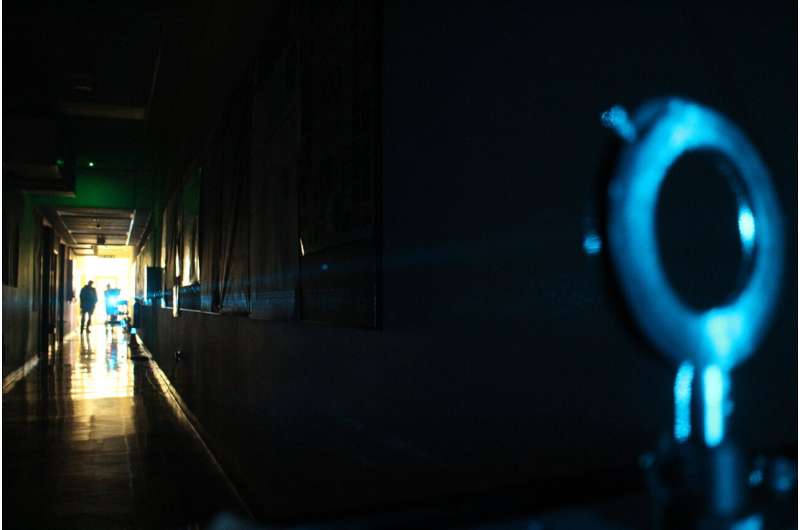Physicists create new form of antenna for radio waves

University of Otago physicists have used a small glass bulb containing an atomic vapor to demonstrate a new form of antenna for radio waves. The bulb was "wired up" with laser beams and could therefore be placed far from any receiver electronics.
Dr. Susi Otto, from the Dodd-Walls Center for Photonic and Quantum Technologies, led the field testing of the portable atomic radio frequency sensor. A paper on the creation was published in Applied Physics Letters.
Such sensors, that are enabled by atoms in a so-called Rydberg state, can provide superior performance over current antenna technologies as they are highly sensitive, have broad tunability, and small physical size, making them attractive for use in defense and communications.
For example, they could simplify communications for soldiers on the battlefield as they cover the full spectrum of radio frequencies, rather than needing multiple antennas to cover different frequency bands, and are super sensitive and accurate to detect a wide range of critical signals. The ability to eliminate the need for multiple sensors also makes them useful in satellite technology.
Importantly, compared to more traditional sensors, Rydberg sensors can function without any metal parts, which can scatter the radio frequency field of interest and the atomic sensor is accessed via laser light, replacing the need for electric cables.
The Otago group's new design is portable and can be taken outside the laboratory. In a first out-of-lab demonstration, the sensor was able to efficiently measure fields in a distance of 30m using a free-space laser link. This adds important flexibility to Rydberg-atom based sensing technologies.
They envision these developments will make quantum sensors more robust and cost-effective, enabling them to move out of labs and into the real world.
More information: J. Susanne Otto et al, Distant RF field sensing with a passive Rydberg-atomic transducer, Applied Physics Letters (2023). DOI: 10.1063/5.0169993
Journal information: Applied Physics Letters
Provided by University of Otago New quantum receiver the first to detect entire radio frequency spectrum
No comments:
Post a Comment